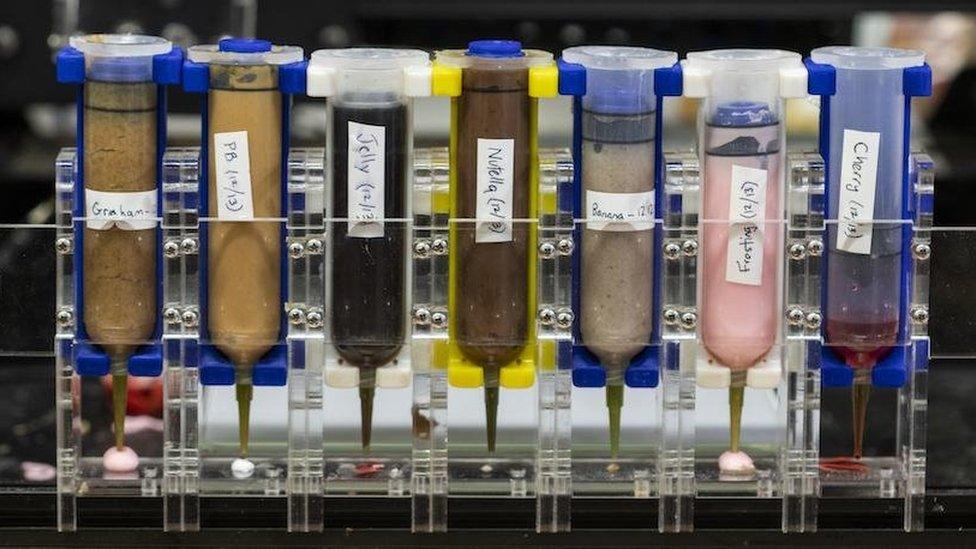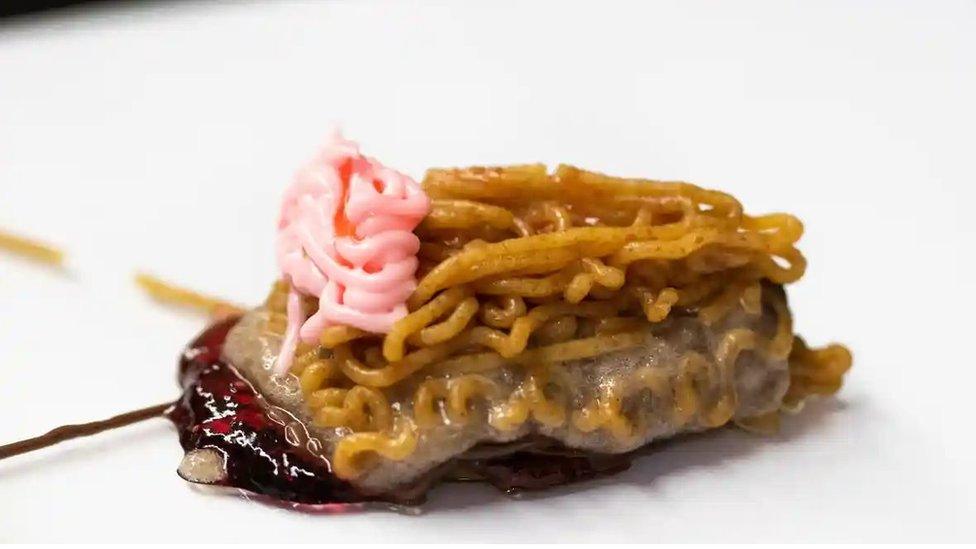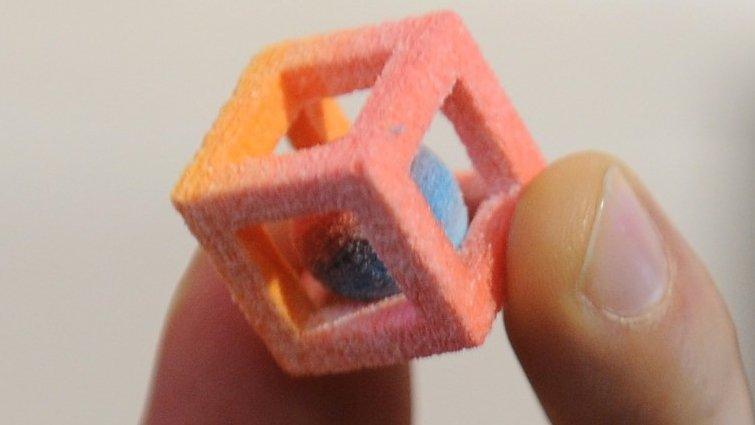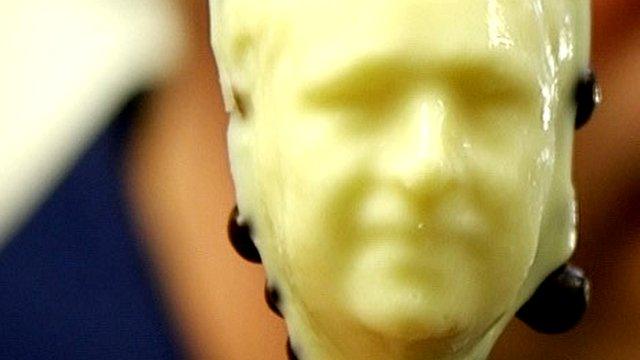3D printed cheesecake anyone? Or how about a roast dinner?
- Published
- comments

Yum, or yuck? What do you think of the 3D-printed cheesecake?
If you're feeling a bit peckish you might grab a spoon and mixing bowl and bake a cake, but scientists in the US have used a printer instead.
The team of engineers at Columbia University in New York used a 3D printer to make a cheesecake using edible food 'ink' as part of printed food project.
"The cheesecake is the best thing we can showcase right now, but the printer can do a whole lot more," said Jonathan Blutinger, an engineer at the university's Creative Machines Lab. "We can print chicken, beef, vegetables and cheese. Anything that can be turned into a paste, liquid or powder."
"The vision is to have a food printer mixed with a laser cooker that can be a one-stop-shop sort of kitchen appliance. It's your own personal digital chef."
Let us know what you think about the 3D printed cheesecake below! Would you try a slice?
How do you 3D print food?

The cheesecake was made of seven different flavoured edible 'inks'
Food printing technology has existed since 2005 when it was trialled by Professor Hod Lipson, but 3D printed food was mostly limited to a small number of uncooked ingredients meaning the food created wasn't the most appetising.
But Blutinger's team created a 3D printer that uses a laser to cook food, and the printer can create multiple layers of different food 'ink' flavours.
How did the team create the 3D printed cheesecake?

The engineers discovered the best way to build the cake after some trial and error
Jonathan and his team of engineers tested a few different ideas for a 3D printed cheesecake.
Eventually they settled on seven ingredients: graham cracker (a biscuit often used in cheesecake bases or s'mores), peanut butter, chocolate spread, banana puree, strawberry jam, cherry drizzle, and frosting.
After five failed attempts, the researchers hit on the right shape and thickness to prevent the cake from collapsing.
They found the most successful design used graham cracker 'ink' for the base and outer layers of the cake, with peanut butter and chocolate spread as supporting layers, acting like walls to hold the softer ingredients like banana and jam.
What did the 3D printed cheesecake taste like?

One of the earlier failed test cakes
"It definitely tasted like something I hadn't tried before," said Jonathan Blutinger.
"I rather enjoyed it, but it's not a conventional mix. We're not Michelin chefs." he said.
Jonathan and the other engineers who are part of the project hope that their 3D printed food tests can help to improve food safety, make food easier to prepare and increase nutrient content of food in the future.
- Published10 January 2014

- Published5 December 2015

